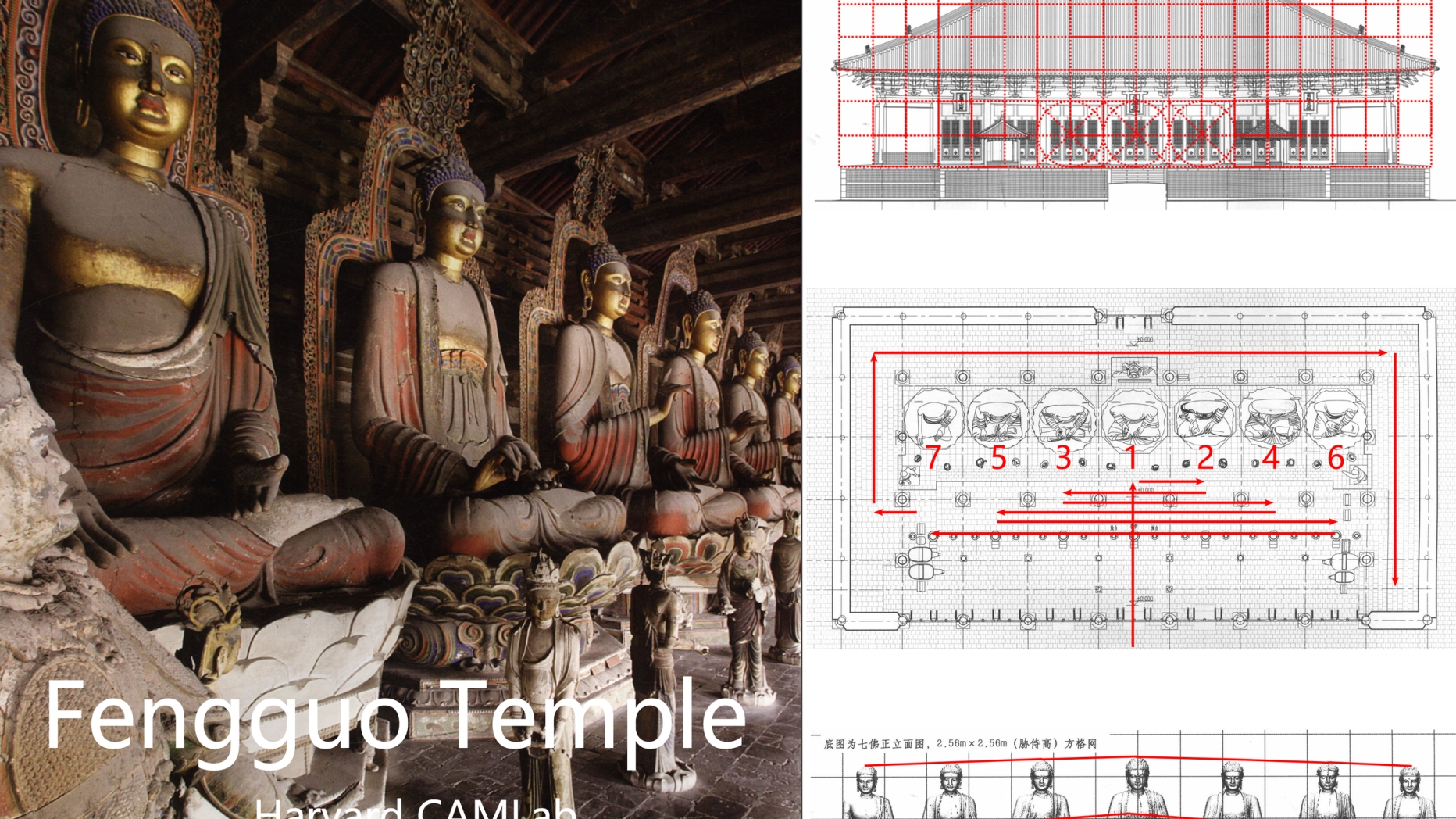Yifei Yang | Harvard CAMLab

"This internship not only trained my research abilities to develop researches into actual or virtual exhibitions, but also improved my skills to cooperate with my partners efficiently."
Stuart Weitzman School of Design
102 Meyerson Hall
210 South 34th Street
Philadelphia, PA 19104

"This internship not only trained my research abilities to develop researches into actual or virtual exhibitions, but also improved my skills to cooperate with my partners efficiently."
During the summer, I worked as a research intern at the Harvard CAMLab, which is an cutting-edge institute from the the Faculty of Arts and Sciences of Harvard University, exploring innovative, interdisciplinary ways of showcasing Chinese art and culture. I participated three different projects in CAMLab: including the Embodied Architecture-Liang Exhibition, the Kaihua Temple, and the Great Game.
For the Embodied Architecture, I explored the architectural features of the main hall in the Fengguo Temple, which was an important example of Liao architecture (1020 A.D.) being investigated by Liang and the Chinese Construction Institute. Then, a storyboard was developed to help design interactive exhibition of the building.
For the Kaihua project, I studied the murals in the main hall of the Kaihua Temple (1073 A.D.), especially the images of ancient buildings in the murals. Cooperating with another intern from MIT, I also built 3D modeling of the 2D images based on actual buildings of the same age. It was the preparation for future developing of exhibiting videos to virtually restore the architectural space being presented in the murals.
For the Great Game project, I conducted research on the expeditions of Paul Pelliot and some other expeditors to west China and central Asia in the beginning of the 20th century, based on the photo archive provided by the CAMLab. I tried to feature out the routine of Pelliot’s expedition according to his own diary and the photos, to feature out the exact location of the photos, and to compare between the photos and the current condition of the site, as many objects from the sites had been taken away by the western expeditions and building structures had been weathering a lot in the past century. Based on the research, our team had begun to build a interactive website to display Pelliot’s expedition.
In this intern program, drawing and modeling skills from the documentation course were adopted and practiced during this process. Typological and observing skills of buildings from the American Architecture course were also used to analyze the features and styles of ancient buildings in China. This internship not only trained my research abilities to develop researches into actual or virtual exhibitions, but also improved my skills to cooperate with my partners efficiently. It was a good opportunity for me to meet more professionalists and specialists in different areas outside conservation and architectural history. CAMLab operated projects starting from preliminary research to exhibition and storytelling, bringing the boring research to broader audience through intermedia methods. Working with artists, CG artists, designers, constructers, I found it a valuable experience for future career.